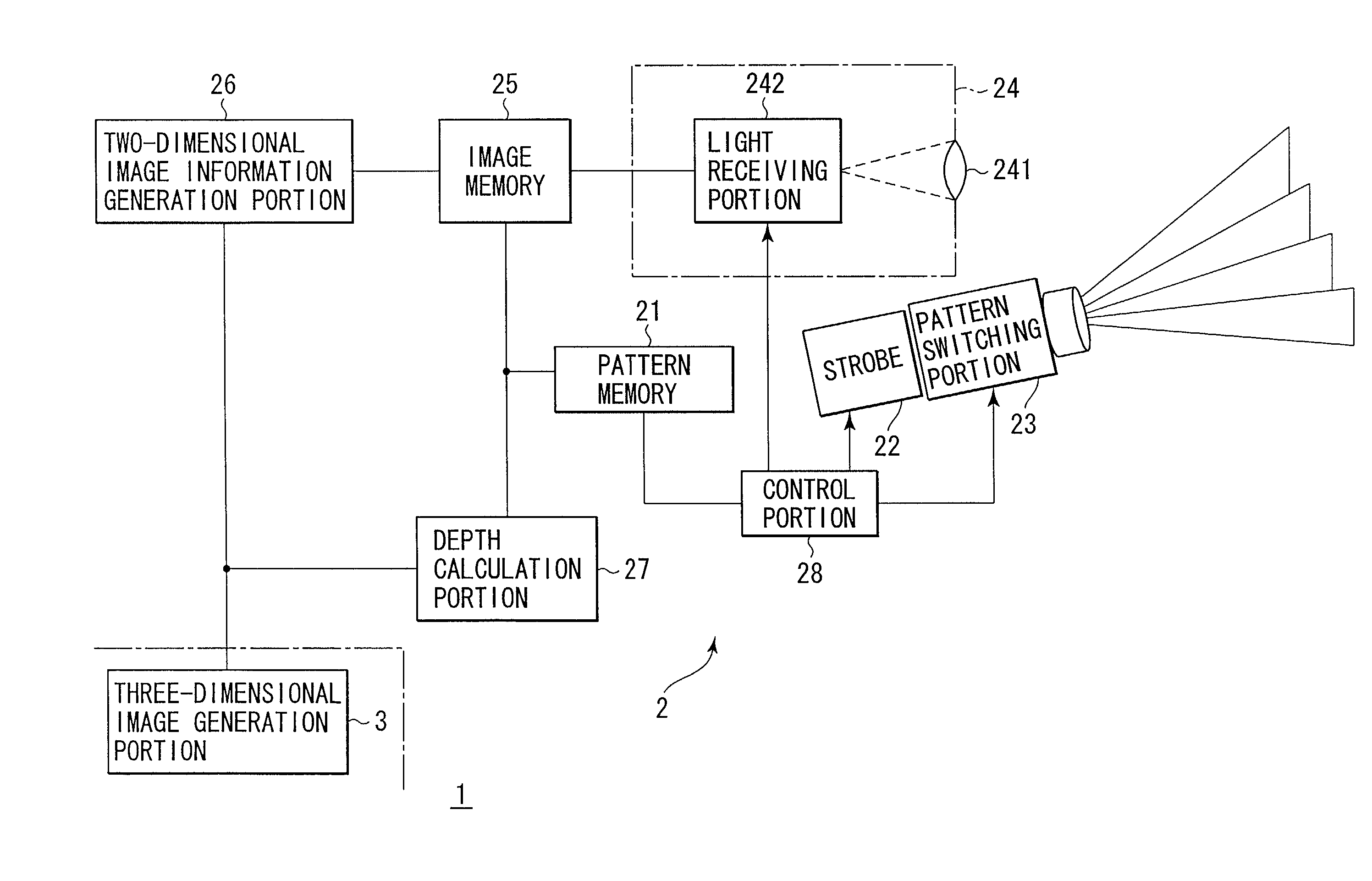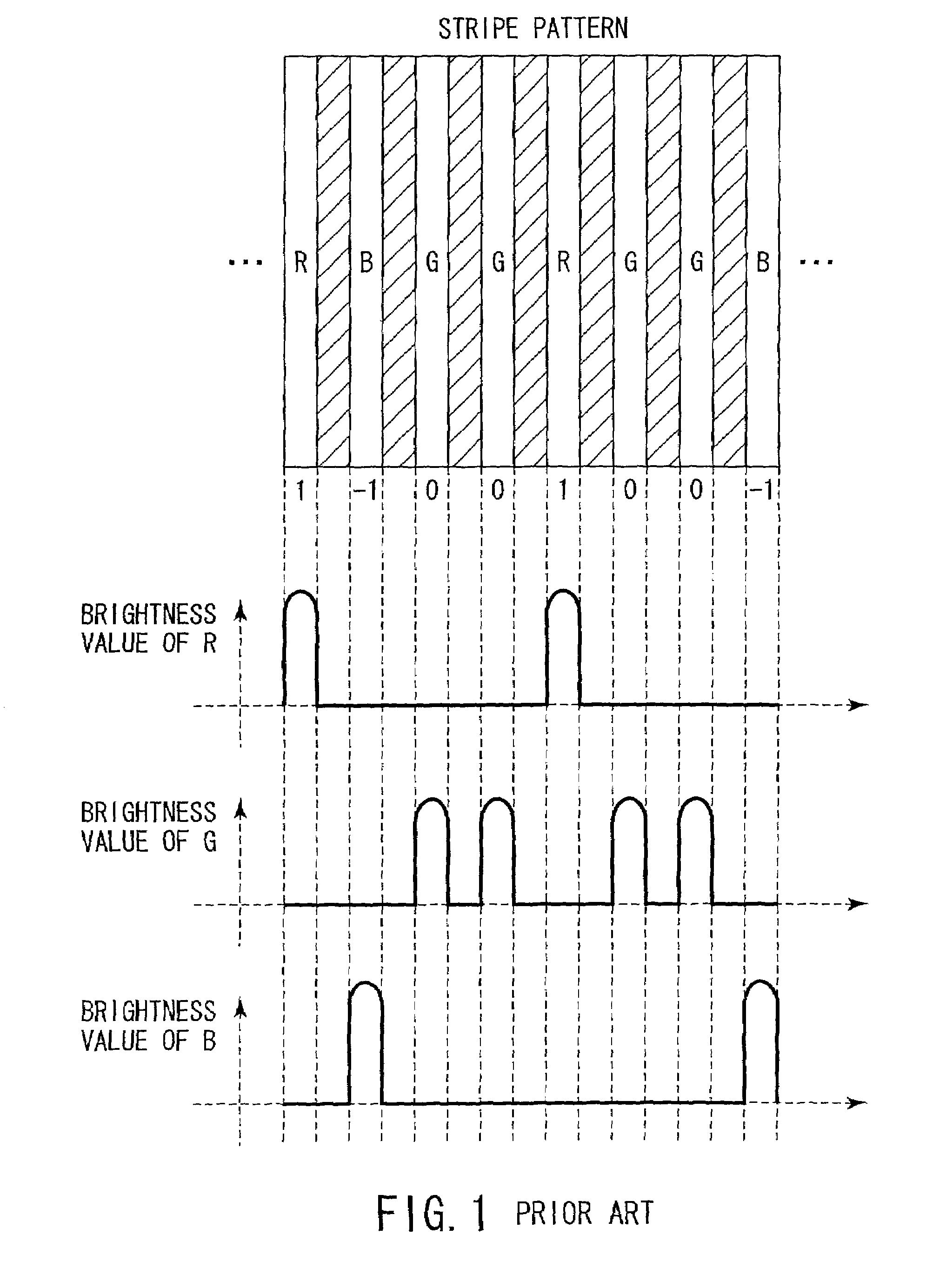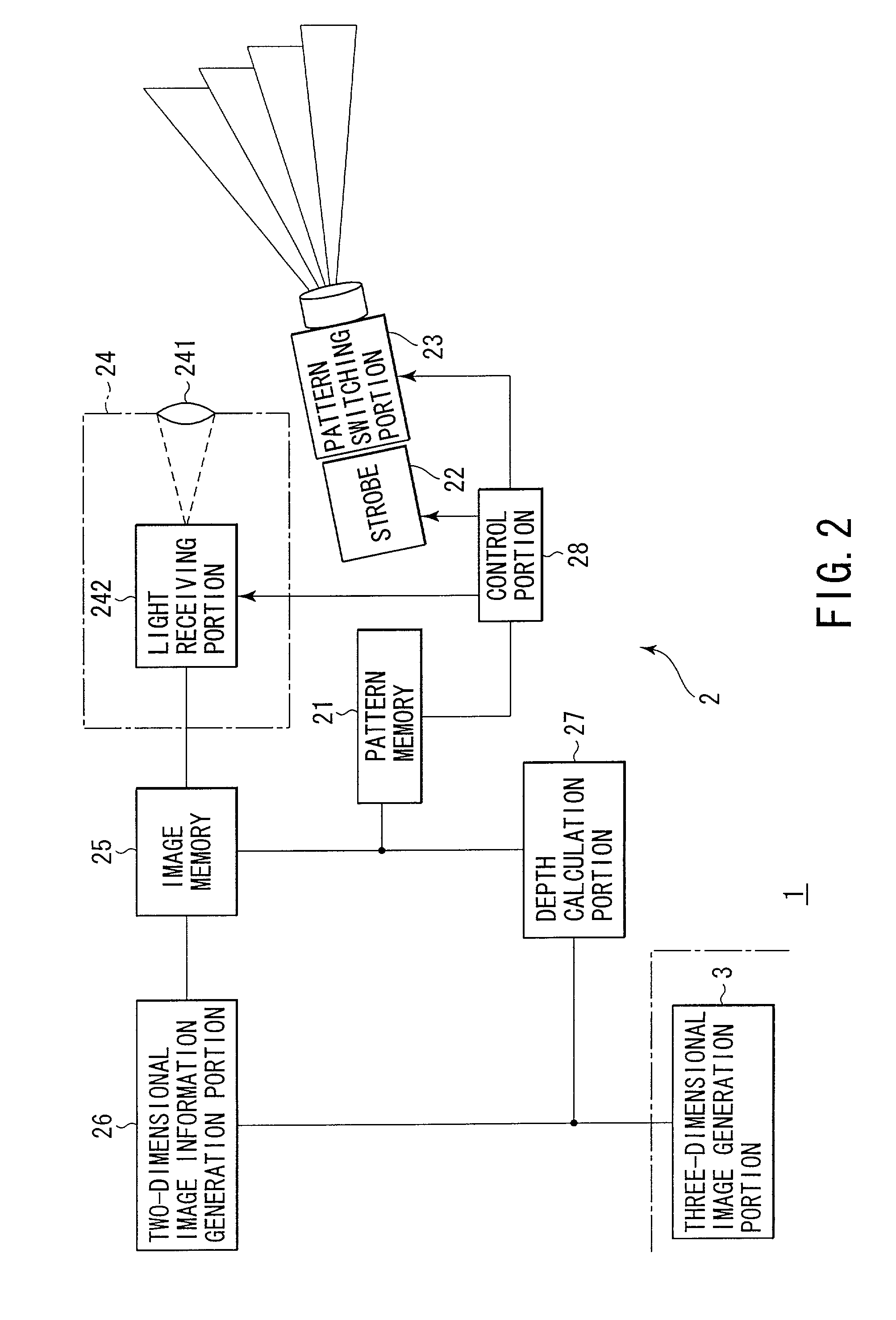Three-dimensional information acquisition apparatus and three-dimensional information acquisition method
a technology of three-dimensional information and acquisition apparatus, which is applied in the field of three-dimensional information acquisition apparatus and three-dimensional information acquisition method, can solve the problems of difficult image feature correspondence, measurement time and accuracy, and the inability to obtain the shape of an object without textur
- Summary
- Abstract
- Description
- Claims
- Application Information
AI Technical Summary
Benefits of technology
Problems solved by technology
Method used
Image
Examples
first embodiment
[0079]FIG. 2 is a view showing a structure of a three-dimensional shape measurement apparatus 1 to which a three-dimensional information acquisition apparatus according to a first embodiment of the present invention is applied.
[0080]This three-dimensional shape measurement apparatus 1 is constituted by a three-dimensional information acquisition apparatus 2 according to a first embodiment of the present invention and a three-dimensional image generation portion 3. The three-dimensional information acquisition apparatus 2 is configured by a pattern memory 21, a strobe 22, a pattern switching portion 23, a shooting portion 24, an image memory 25, a two-dimensional image information generation portion 26, a depth calculation portion 27 and a control portion 28.
[0081]Here, the pattern memory 21 stores therein a code sequence or the like of a projection pattern to be projected onto an object (not shown). The strobe 22 is used for emitting the light, and the pattern switching portion 23 s...
second embodiment
[0125]The second embodiment according to the present invention will now be described. In this second embodiment, the method part is the same as the three-dimensional information acquisition method used in the first embodiment, but the apparatus structure is different.
[0126]That is, as shown in FIG. 6, a three-dimensional information acquisition apparatus 2 according to the second embodiment is constituted by a pattern memory 21 which stores therein a pattern to be projected onto an object, a strobe 22 used for emitting light, a pattern switching portion 23 which switches presence / absence of the pattern which modulates the intensity (transmissivity) of the light depending on a position, condenser lenses 241R and 241L which condense the reflected light, light receiving portions 242R and 242L which receives the light condensed by the condenser lenses 241R and 241L, image memories 25R and 25L which store therein a taken image, a two-dimensional image information generation portion 26 wh...
third embodiment
[0135]A third embodiment according to the present invention will now be described.
[0136]The apparatus structure according to the third embodiment is similar to that according to the first embodiment or the second embodiment. A difference lies in that the influence of the external light is suppressed by shooting with a high-speed shutter (for example, 1 / 500 second). As a result, non-flash shooting without a pattern can be eliminated, and fetching the image can be thereby completed by the two times of shooting, i.e., the projection pattern shooting and the flash shooting without a pattern.
[0137]Based on this, the flow of processing becomes slightly simpler than that of the first embodiment or the like. This will now be described with reference to FIG. 7.
[0138]The coded color pattern 4 is first projected onto the object (step S1). Then, the projected pattern is shot with the high-speed shutter, and the obtained image data (Pr, Pg and Pb) is input to the image memory 25 (step S2).
[0139]...
PUM
 Login to View More
Login to View More Abstract
Description
Claims
Application Information
 Login to View More
Login to View More - R&D
- Intellectual Property
- Life Sciences
- Materials
- Tech Scout
- Unparalleled Data Quality
- Higher Quality Content
- 60% Fewer Hallucinations
Browse by: Latest US Patents, China's latest patents, Technical Efficacy Thesaurus, Application Domain, Technology Topic, Popular Technical Reports.
© 2025 PatSnap. All rights reserved.Legal|Privacy policy|Modern Slavery Act Transparency Statement|Sitemap|About US| Contact US: help@patsnap.com



